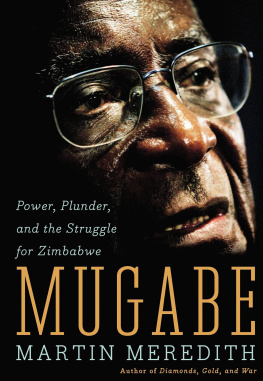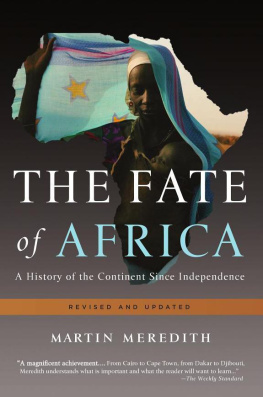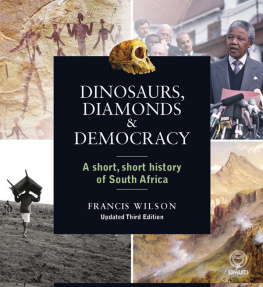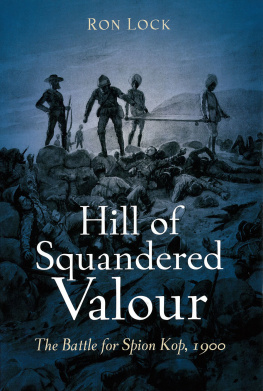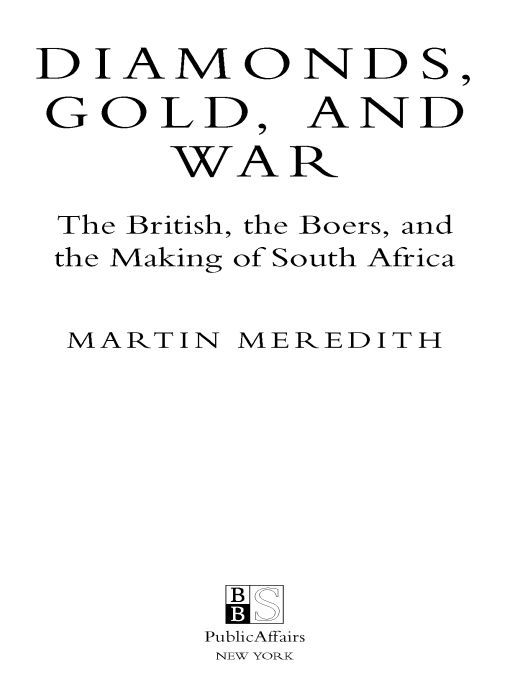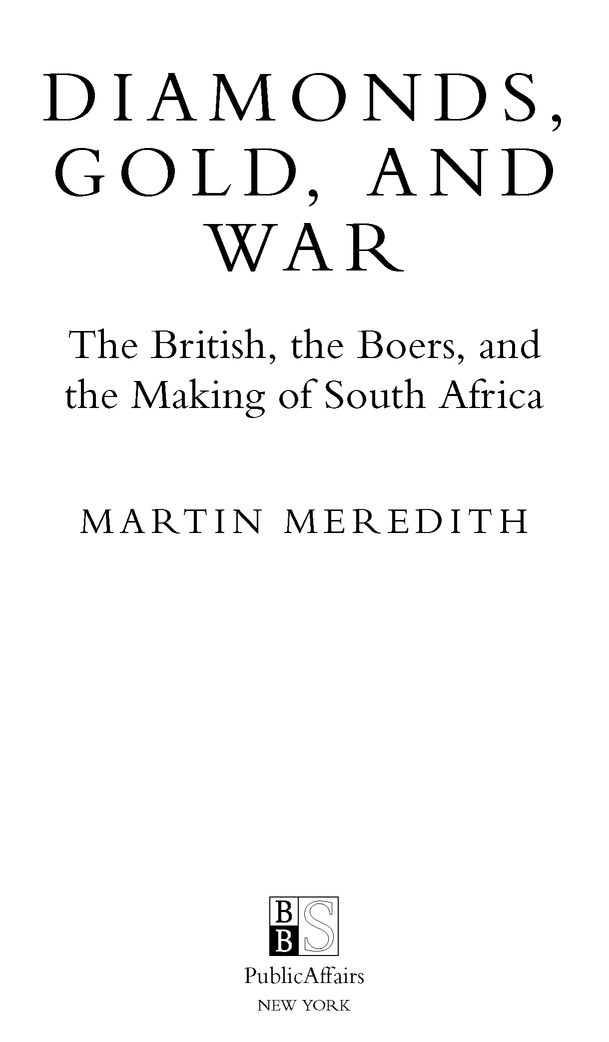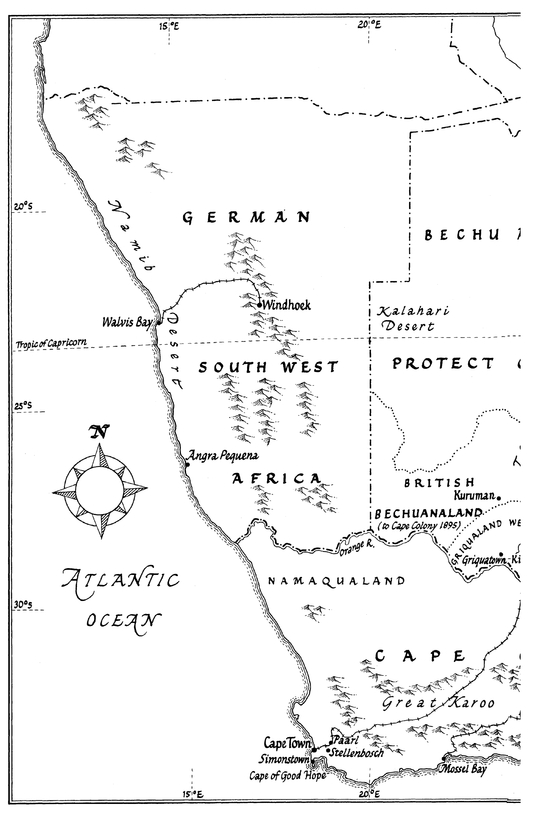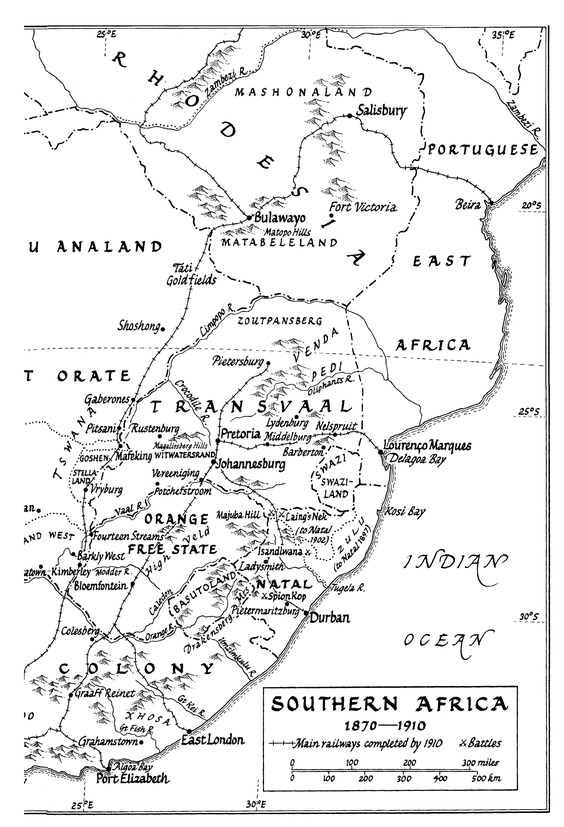Table of Contents
ALSO BY MARTIN MEREDITH
The Past Is Another Country:
RhodesiaUDI to Zimbabwe
The First Dance of Freedom:
Black Africa in the Postwar Era
In the Name of Apartheid:
South Africa in the Postwar Era
Nelson Mandela: A Biography
Coming to Terms:
South Africas Search for Truth
Elephant Destiny:
Biography of an Endangered Species in Africa
Mugabe:
Power, Plunder, and the Struggle for Zimbabwe
The Fate of Africa:
A History of Fifty Years of Independence
I speak of Africa, and golden joys...
Shakespeare
Henry IV, Part 2, Act v, Sc. iii
AUTHORS NOTE
During my travels around southern Africa over the past forty years I have often been struck by the long-term repercussions that came from the making of the modern state of South Africa. Actions taken in the late nineteenth century continued to reverberate for more than a hundred years. One notable legacy is the multitude of battlefields that still arouse keen public interest - places such as Blood River, Isandlwana, Majuba and Spion Kop. But much else of modern South Africa was shaped by events of that time, in particular the rise of its fortunes from diamonds and gold and the steady dispossession of African land. It was also a time which saw the determined enforcement of segregation measures that culminated eventually in the apartheid system.
This book has been written in more auspicious circumstances. Despite their tortuous history, South Africans have managed to fashion for themselves a stable democracy with a robust constitution - one of the great triumphs of the late twentieth century. Witnessing this transformation has been a heartening experience. My thanks are due to a host of South African friends and acquaintances who over the years have given me such generous help and hospitality.
INTRODUCTION
When Britain took possession of the Cape Colony in 1806 during the course of the Napoleonic Wars it was a slave-owning outpost, three months sailing distance from London, previously run as a Dutch commercial enterprise that had teetered on the edge of bankruptcy for years. Britains only interest in the Cape was its use as a naval base at the foot of Africa halfway along the vital trade route between Europe and Asia - a stepping stone that the British government was determined to keep out of French hands. Its wartime occupation was not expected to be permanent.
The white colonial population, descendants of Dutch, German and French Huguenot settlers, was small, no more than 25,000 in all, scattered across a territory of 100,000 square miles. Most lived in Cape Town and the surrounding farming districts of the Boland, an area favoured with rich soils, a Mediterranean climate and reliable rainfall, renowned for its vineyards and gracious living. The prosperity of the Colony depended heavily on the labour of foreign slaves imported from other enclaves in Africa and from Asia. Almost every European family of standing in the western Cape owned slaves. Cape Towns population of 16,000 included some 10,000 slaves. White burghers also acted as overlords of the indigenous Khoikhoi, aboriginal pastoralists commonly called Hottentots, who had lost most of their land during 150 years of white occupation and who now served the white community as a labouring class treated no better than the slave population. The total population of the Cape Colony was no more than 75,000.
Beyond the fertile valleys and mountains of the Cape peninsular region lay a vast hinterland of scrub and semi-desert known to the Khoikhoi as the Karoo - the dry country. Dutch stock farmers - trekboers, as they were called - had spread across this interior, herding sheep and cattle, living simply in ox-wagons or crude dwellings on farms they had staked out, trading in elephant ivory and animal hides and often clashing with indigenous pastoralists and hunters. In the north, the trekboers had reached the Orange River, 400 miles from the peninsula; a journey by wagon from their frontier farms to Cape Town and back took up to three months. In the east, they had collided with Bantu-speaking Xhosa chiefdoms expanding westwards across the Fish River into the Zuurveld grasslands, 450 miles from Cape Town. Parts of the frontier frequently degenerated into a turmoil of cattle raids and intermittent warfare.
As the Colonys new rulers, the British set out to impose some form of law and order on the turbulent eastern frontier, despatching regular troops there in 1811 to help burgher militias - commandos, as they were known - expel the Xhosa from the Zuurveld. In his report to London on the success of the mission, the governor, Sir John Cradock, remarked: I am happy to add that in the course of this service there has not been shed more Kaffir blood than would seem necessary to impress on the minds of these savages a proper degree of terror and respect. In 1819, in a desperate bid to regain their land, 10,000 Xhosa warriors descended on the frontier village of Grahams Town intent on driving out the whites. But, once again, they were defeated, losing yet more land to the colonists.
In an attempt to provide the eastern frontier with greater security, the British government devised a plan to populate the area with immigrant settlers from Britain. The plan was presented to Parliament in London as an economy measure that would help reduce unemployment and alleviate social unrest prevalent after the end of the Napoleonic Wars. Parliament duly voted 50,000 to transport volunteers to the Zuurveld and set them up as agricultural farmers on allotments of about a hundred acres. Some 4,000 men, women and children were chosen from among 80,000 applicants. The majority of the men were urban artisans with no farming experience. What none of them was told, until their arrival in Algoa Bay in 1820, was that the land they had been allocated was in fiercely disputed territory where five frontier wars had previously occurred. The new settlers also discovered that the sour-grass farms of the Zuurveld were unsuitable for cultivation. Within a few years, more than half had abandoned the land and retreated to villages.
Having sponsored the 1820 settlers, the British government was then obliged to ensure their protection in this highly volatile area. To the consternation of the Colonial Office, as the succession of frontier wars with the Xhosa continued, this became an increasingly costly exercise. In his review of the history of British policy at the Cape published in 1853, a former colonial secretary, Earl Grey, concluded that the governments commitment to British settlement made in 1819 on the grounds of being an economy measure proved to be among the most expensive in the annals of the British empire. What British officials found especially aggravating was that Britain had no vital interest in the Cape other than its naval facilities on the peninsula. Few persons would probably dissent from the opinion that it would be far better for this country if the British territory in South Africa were confined to Cape Town and Simons Bay, observed Earl Grey. A long-serving senior Colonial Office official, James Stephen, described the Cape interior as the most sterile and worthless in the whole Empire, with no commercial significance.




